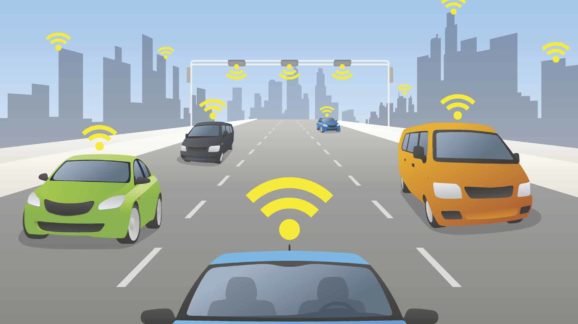Self-Driving Car Developers Blast Dangerous Draft California Regulations

 Today, the California Department of Motor Vehicles held a public workshop on its latest draft deployment regulations for autonomous vehicles. CEI, along with the R Street Institute, Tech Freedom, and International Center for Law and Economics submitted comments in response to the latest draft. California became the first state to attempt to incorporate the National Highway Traffic Safety Administration’s recent Federal Automated Vehicles Policy guidance document into state-level rules. This was a major mistake.
Today, the California Department of Motor Vehicles held a public workshop on its latest draft deployment regulations for autonomous vehicles. CEI, along with the R Street Institute, Tech Freedom, and International Center for Law and Economics submitted comments in response to the latest draft. California became the first state to attempt to incorporate the National Highway Traffic Safety Administration’s recent Federal Automated Vehicles Policy guidance document into state-level rules. This was a major mistake.
We raised several concerns, including:
- The DMV should not mandate NHTSA’s voluntary safety performance guidance by baking it into the permit approval process. In fact, in NHTSA’s guidance document, which suffers from a number of deficiencies, the agency explicitly states, “This Guidance is not intended for States to codify as legal requirements for the development, design, manufacture, testing, and operation of automated vehicles” (p. 11). Yet, this is exactly what the California DMV proposes to do in its draft.
- The DMV failed to adhere to SAE International’s taxonomy and definitions, which form the basis of NHTSA’s conception of vehicle automation systems. As a result, the DMV’s draft rules repeatedly use terms explicitly rejected by SAE International and NHTSA (such as “autonomous” and “control”), muddling the testing, deployment, and legal environments.
- The DMV went beyond its statutory information privacy mandate and proposed incoherent and counterproductive privacy provisions that would, if promulgated, stifle automated vehicle development, testing, and deployment.
- The DMV unnecessarily prohibited heavy trucks equipped with driving automation systems, where there is great potential for near-term deployment. See my recent whitepaper for more on this issue.
At the workshop, NHTSA Administrator Mark Rosekind emphasized the life-saving and mobility-enhancing potential of automated vehicles, and stressed that his agency sought to avoid getting in the way of innovation.
NHTSA Associate Administrator for Vehicle Safety Research Nat Beuse then took the podium. He underscored that the voluntary safety performance guidance is still being refined and that states should stick to their traditional “lanes of responsibility,” namely licensing and operations rules, rather than vehicle safety standards.
Near the beginning, a representative from the Association of Global Automakers said, “California is still heading in the wrong direction on this issue,” and denounced the DMV’s draft rules as “inconsistent with federal law” and in fundamental conflict with NHTSA’s Federal Automated Vehicles Policy. Further, he noted that California’s attempt to mandate NHTSA’s Safety Assessment letter essentially usurps NHTSA’s regulatory authority, leading to a potential conflict where NHTSA would give its blessing to a developer’s Safety Assessment, but California DMV would then deny it. These concerns were echoed by other automakers, developers, and experts such as former NHTSA Administrator David Strickland, who noted, “The stakes are enormous.”
California DMV General Counsel Brian Soublet testily replied that because NHTSA had not yet issued Federal Motor Vehicle Safety Standards for automated vehicles, the 2012 statute under which these state regulations are to be implemented requires DMV to engage in activities traditionally assigned to NHTSA, areas in which the California agency has no expertise—as has become painfully obvious.
As I have noted in the past, while the California DMV has not been particularly accommodating, the legislature enacted a very poorly crafted statute. As a result, the DMV’s hands are to some extent tied. Legislators and the governor have basically ordered them to promulgate nonsensical regulations.
As a result, there are two clear options for remedying this major problem:
First, and preferably, the California legislature should repeal all provisions related to safety performance and testing requirements, which remain the proper domain of NHTSA.
Second, and which may be necessary if California’s legislators fail to act in a responsible manner, is for Congress to slap down California and states like it by explicitly preempting them in all matters of vehicle safety performance and testing, leaving NHTSA the sole national regulator in these matters.
If California continues down its current path, it threatens not only the innovation of automated vehicles, but the lives of people who would have otherwise been saved if not for the deployment delays that result from these misguided rules. Unless they cease attempting to involve their state in matters of federal responsibility, California’s politicians and bureaucrats will have blood on their hands. The public and the press ought to watch them carefully and hold them accountable if they fail.